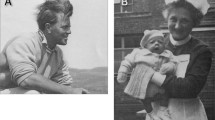Abstract
Phototherapy is the most widely used form of therapy for unconjugated hyperbilirubinaemia. Its non-invasive nature and few side effects reported earlier have led to the assumption that it is innocuous. Recent research has revealed that phototherapy is a photodynamic stress and can induce lipid peroxidation. There is increasing evidence that many severe diseases of the neonate are caused by oxidative injury and lipid peroxidation. In the present communique, we review the oxidative succeptibility of the neonate and the evidence now available that phototherapy induces oxidative stress. Although intensive phototherapy (up to 40 mwatt/cm2/nm) has been reported to be increasingly effective, a little caution, we believe is warranted, till more definite data in the human neonate, help resolve the issue.
Similar content being viewed by others
References
Maisels MJ, Gifford K, Antle CE. Jaundice in the healthy newborn infant: a new approach to an old problem.Pediatr 1988; 81: 505–511.
Tan KL. Phototherapy for neonatal jaundice.Acta Pediatr 1996; 85: 277–279.
Tan KL. Phototherapy for neonatal jaundice.Clin in Perinatol 1991; 18:423–436.
Saugstad OD. Oxygen toxicity in the neonatal period.Acta Pediatr Scand 1990; 79: 881–892.
Tanswell AK, Freeman BA. Pulmonary antioxidant enzyme maturation in the fetal and neonatal rat. I. Developmental profiles.Pediatr Res 1984; 18: 584–587.
Ripalda MJ, Rudolph N, Wong SL. Developmental patterns of antioxidant defense mechanisms in human erythrocytes.Pediatr Res 1989; 26; 366–369.
Gutteridge JMC, Stocks J. Ceruloplasmin physiological and pathological perspectives.CRC Crit Rev Clin Lab Sci 1981; 14:257–329.
Sullivan JL, Newtan RB. Serum antioxidant activity in neonates.Archives of Diseases in Childhood 1988; 63:748–757.
Varsila E, Hallman M, Anderson S. Free radical induced lipid peroxidation during the early neonatal period.Acta Pediatr 1994; 83: 682–685.
Huertas JR, Palomino N, Ochoa JJ. Lipid peroxidation and antioxidants in erythrocyte membranes of full term and preterm newborns.Biofactors 1998; 8:133–137.
Gordon H, Nitowsky HM, Cornblath M. Studies of tocopherol deficiency in infants and children. I. Hemolysis of erythrocytes in hydrogen peroxide.Am J Dis Child 1955; 90: 669–681.
Clemens MR, Ruess M, Bursa Z. The relationship between lipid composition of red blood cells and their susceptibility to lipid peroxidation.Free Radic Res Commun 187; 3 :265–271.
Etukudo MH, Ramachandran M, Iyer GYN. methemoglobin formation and glutathione disappearance in cord blood red cells exposed to acetylphenylhydrazine.Clin Chim Acta 1984; 138:135–139.
Bracci R, Beneditti PA. Hydrogen peroxide generation in erythrocyte of newborn infants.Biol Neonate 1970; 15: 135–141.
Haga P, Lunde G. Selenium and vitamin E in cord blood from preterm and full-term infants.Acta Pediatr Scand 1978; 67:735–739.
Cruz CSD, Wimberley PD, Johansen K. The effect of vitamin E on erythrocyte hemolysis and lipid peroxidation in newborn premature infants.Acta Pediatr Scand 1983; 72: 823–826.
Agostoni A, Gerli GC, Beretta L. Superoxide dismutase, catalase and glutathione peroxidase activities in maternal and cord blood erythrocytes.J Clin Chem Clin Biochem 1980; 18: 771–773.
Watkins JA, Claster S, Caughey WS. Exchanged production of any radicals and peroxide by hemoglobin S and F.Fed Proc 1986; 45:1640A.
Gross S. Hemolytic anemia in premature infants. Relationship to vitamin E, selenium, glutathione peroxidase and erythrocyte lipids.Semin Hematol 1976; 13:187–199.
Poland RL, Ostrea EM. Neonatal hyperbilirubinemia. In: Klaus MH, Fanaroff AA, editors : Care of the High risk neonate. ed. 4. Philadelphia: WB Saunders, 1993; 302–322.
McDonagh AF. The role of singlet O2 in bilirubin photooxidation.Biochem Biophys Res Commun 1971; 44: 1306–1309.
McDonagh AF. Is bilirubin good for you?Clin Perinatol 1990; 17:359–369.
Stocker R, McDonagh AF, Glazer AN, Ames BN. Antioxidant activities of bile pigments: biliverdin and bilirubin.Methods Enzymol 1990; 186 :301–309.
Dennery PA, McDonagh AF, Stevenson DK. In-vivo role of bilirubin in neonatal antioxidant defenses.Pediatr Res 1992; 31: A200.
Hegyi T, Goldie E, Hiatt M. The protective role of bilirubin in oxygen radical diseases of preterm infant.J Perinatol 1994; 14:296–300.
Stocker R, Glazer AN, Ames BN. Antioxidant activity of albumin bound bilirubin.Proc Natl Acad Sci USA 1987; 84:5918–5922.
Stocker R, Yamamto Y, McDonaugh AF, Glazer AN, Ames BN. Bilirubin is an antioxidant of physiological importance.Science 1987; 235:1043–1046.
Benaron DA, Bowen FW. Variation of initial serum bilirubin rise in newborn infants with type of illness.Lancet 1991; 338: 78–81.
Belanger S, Lavoie JC, Chessex P. Influence of bilirubin on antioxidant capacity of plasma in jaundiced newborn infants.Biol Neonate 1997; 71: 233–238.
Ostrea EM Jr, Cepeda EE, Fleury CA, Balun JE. Red cell membrane lipid peroxidation and hemolysis secondary to phototherapy.Acta Pediatr 1985; 74: 378–381.
TozziCiancarelli MG, Amicosante G, Menichelli A, DiGiulio S, Principe DD. Photodynamic damage induced by bilirubin on human platelets: possible relevance to newborn pathology.Biol Neonate 1985; 48: 336–340.
Tozzi E, TozziCiancarelli MG, DiGiula A, D’Alfonso A, Farello G. In-vitro and in-vivo effects of erythrocyte phototherapy on newborns.Biol Neonate 1989; 56:204–209.
Karthikeyan G, Narang A, Majumdar S, Shivani K. Photooxidant injury to glucose-6-phosphate dehydrogenase deficient erythrocytes with bilirubin as the sensitizer an in-vitro study.Acta Pediatr 1997; 86(3): 321–322.
Neuzil J, Darlow BA, Inder TE, Sluis KB, Winterbaum CC, Stocker R. Oxidation of parenteral lipid emulsion by ambient and phototherapy lights: potential toxicity of routine parenteral feeding.J Pediatr 1995; 126:785–790.
Majumder S, Sarkar U, Sengupta D. Jaundice in newborn and erythrocyte and plasma antioxidant defense system.Indian J Exp Biol 1995; 33:303–305.
Dennery PA, Stevenson DK. Neonatal hyperbilirubinaemia. In: Polin RA, Yoder MC, Burg FD (eds.). Workbook in Practical Neonatology, WB Saunders Company, Philadelphia : 1993, pp. 79–98.
Provisional Committee for quality improvement and subcommittee on hyperbilirubinaemia. American Academy of Pediatrics. Practice Parameter: Management of Hyperbilirubinaemia in the healthy term newborn.Pediatrics 1994; 94:558–64.
Akisu M, Coker C, Tuzun S, Yilmaz D, Kultursay N. Serum malondialdehyde levels in preterm and full term infants undergoing phototherapy.Acta Pediatr 1998; 87: 605–606.
Akisu M, Yilmaz D, Tuzun S, Kultursay N. Antioxidant defense systems in newborns undergoing phototherapy.Indian J Pediatr 1999; 66: 653–657.
Author information
Authors and Affiliations
Rights and permissions
About this article
Cite this article
Gathwala, G., Sharma, S. Oxidative stress, phototherapy and the neonate. Indian J Pediatr 67, 805–808 (2000). https://doi.org/10.1007/BF02726223
Issue Date:
DOI: https://doi.org/10.1007/BF02726223




